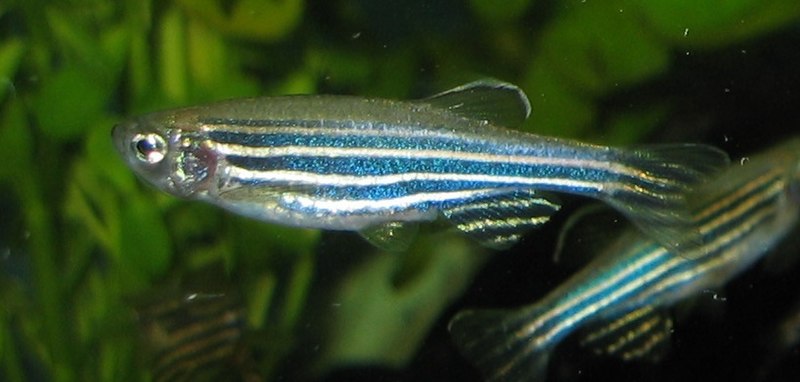Tag Archives: Swedish Museum of Natural History
New genus created in danioninae revision
A study of the molecular phylogenetic interrelationships of south Asian cyprinid genera Danio, Devario and Microrasbora has resulted in a reclassification of the group and the creation of a new genus: Microdevario.
The study, which has been published in a recent issue of the journal Zoologica Scripta, was carried out by Fang Fang and his colleges at the Swedish Museum of Natural History.
The researchers examined the molecular phylogeny of the Danioninae using fragments of the mitochondrial cytochrome b and nuclear rhodopsin genes from 68 species, including 43 danioinine species.
The analysis revealed the species Microrasbora rubescens and the genera Chela, Laubuca, Devario, and Inlecypris to form a natural group, the Devario clade, with the species Microrasbora gatesi, Microrasbora kubotai and Microrasbora nana being in sister group position to the rest.
Zebrafish
These findings, in combination with subsequent analysis of morphological characters, have made the authors propose four taxonomic changes:
· The species Inlecypris auropurpurea is reassigned as Devario auropurpureus.
· Microrasbora gatesi, Microrasbora kubotai and Microrasbora nana are reassigned to a new genus named Microdevario. Fish of this genus are distinguished from other danioinines by a combination of skull and jaw characters.
· Reassignment of the species Celestichthys margaritatus to the genus Danio in previous studies is confirmed.
· The membership of Chela is restricted to Chela cachius. All other species previously placed in this genus are reassigned to the genus Laubuca, except Chela maassi, which is in the genus Malayochela.
For more information about the study and the suggested taxonomic changes, see the paper Fang, F, M Norén, TY Liao, M Källersjö and SO Kullander (2009) Molecular phylogenetic interrelationships of the south Asian cyprinid genera Danio, Devario and Microrasbora (Teleostei, Cyprinidae, Danioninae). Zoologica Scripta 38, pp. 237–256.
Black widows established in Sweden
Unlike many other countries, Sweden has traditionally been blessed with the absence of dangerously venomous spiders, snakes and similar critters, but this might be about to change as more and more new species establish themselves in Scandinavia. One of the latest additions to the Swedish fauna is the Black widow spider, according to Naturhistoriska riksmuseet (Swedish Museum of Natural History) in Stockholm.
“This year about 10 black widows have been sent to me, but I will of course only find out about a small fraction of all discovered specimens”, says Bert Gustavsson, assistant curator at Naturhistoriska riksmuseet, to Swedish news agency Tidningarnas Telegrambyrå (TT). He also adds that a lot of the spiders that reach Sweden as cargo stowaways manage to avoid discovery altogether.
According to Bert Gustavsson, it is safe to assume that the black widow has now established itself in Sweden for good. “One example is the guy in Värmland who imported a car from the U.S. The car was stored in a garage for three years. When he was about to move the car, spiders emerged from it. This means that they had been reproducing in the garage for three years.”
A protective garage is however not necessary for these spiders to thrive and the Swedish climate is not a problem for them since black widow spiders can be found in parts of Canada and northern United States subjected to even colder winters and warmer summers than Sweden.
Swedish hospitals do not hold black widow anti-venom and will instead focus on handling the various symptoms that can appear when a person has been bitten, such as muscle spasms and changes in blood pressure. “Fatalities have occurred around the world, but that depends on how much venom that is injected and the location of the bite” says Dr Anna Landgren at the Swedish Poisons Information Centre to TT. “In 80 percent of the cases the bitten person will only develop mild symptoms in the form of sweating and ache.”
Facts about the Black Widow:
The name black widow spider is used for three different spider species within the genus Latrodectus: Southern black widow (Latrodectus mactans), Northern black widow (Latrodectus variolus), and Western black widow (Latrodectus hesperus). The Southern black widow is native to south-eastern United States, the Northern black widow hails from north-eastern United States and south-eastern Canada, and the Western black widow lives in the western parts of the United States, the south-western parts of Canada, and in much of Mexico.

